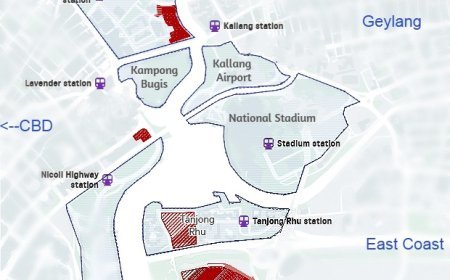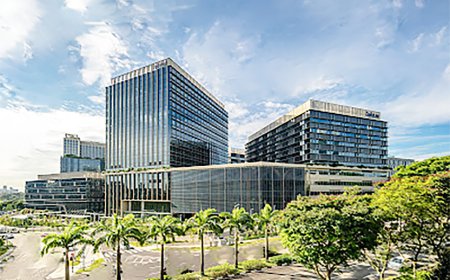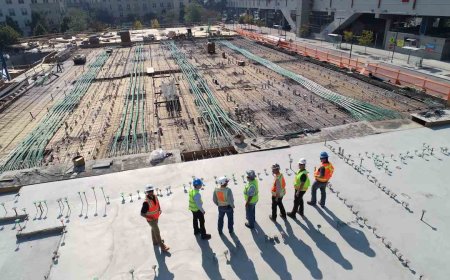AI Surge Drives Global Data Center
Global data center leasing reached record highs in Q1 2025, driven by hyperscaler demand and AI expansion. Vacancy rates dropped to historic lows as operators turned to secondary markets and emerging hubs worldwide.

In the first quarter of 2025, global data center leasing reached unprecedented levels. This surge was driven by hyperscale cloud service providers and AI infrastructure demands, which have reshaped the digital landscape and redefined data center deployment strategies. With rising constraints in power availability and land supply, especially in traditional data center hubs, operators and tenants are increasingly turning to secondary and emerging markets worldwide.
Step-by-Step Breakdown of Key Trends in Q1 2025
1. Accelerated Demand from AI and Cloud Expansion
The global boom in artificial intelligence has triggered an extraordinary increase in computing requirements. Hyperscale companies—typically global cloud providers and major tech platforms—have accelerated their expansion into data centers to meet the needs of AI model training, large-scale data processing, and distributed cloud services.
This wave of AI-driven growth is placing heavy pressure on available data center inventory, causing vacancy rates to fall sharply across major markets.
2. Global Vacancy Rates Hit Historic Low
Across the 16 global markets tracked, vacancy rates fell to an average of 6.6 percent, the lowest on record. This represents a year-over-year decline of 2.1 percentage points, highlighting the tightening supply environment.
-
North America recorded the tightest vacancy at just 2.3 percent, reflecting significant leasing activity and power-focused expansion.
-
Europe also hit a regional low at 7.4 percent, as operators continued to deploy capacity near core business hubs.
-
Latin America saw vacancy decline to 8.8 percent, supported by new market entries and local demand growth.
-
Asia-Pacific faced a vacancy rate of around 14 percent, although specific cities like Singapore stood out with only 2 percent availability due to space and regulatory constraints.
3. Leasing Growth Led by North America
North America led the global leasing trend with a 43 percent year-over-year increase in data center inventory. Northern Virginia remained the largest market, while Atlanta and Phoenix surpassed Dallas and Silicon Valley to secure the second and third spots respectively in terms of capacity expansion.
Net absorption in the region reached 1,668.5 megawatts (MW), more than double the previous year's figure, underscoring the region’s leadership in both leasing activity and infrastructure development.
Europe followed with 300.4 MW, its second-highest total ever recorded. Leasing gains were supported by improvements in energy planning and power delivery timelines.
In Latin America, net absorption grew to 99.9 MW, compared to 73.3 MW a year earlier. Growth was somewhat constrained by power availability in cities such as Querétaro and Bogotá.
Asia-Pacific saw its strongest performance in Tokyo, with 49.8 MW of leasing. Other emerging hotspots include Sydney, Melbourne, and Johor, all of which are preparing for AI-powered digital workloads.
4. Price Movements Reflect Supply Pressures and Power Access
Rental rates climbed across North America and Europe, influenced by a combination of limited supply, high land costs, and rising construction expenditures.
In contrast:
-
Santiago and São Paulo experienced downward pressure on pricing due to increased inventory.
-
Querétaro and similar markets with constrained electricity supply saw upward pressure on rental rates, as demand for ready-to-occupy, power-available spaces surged.
-
Asia-Pacific pricing remained broadly stable, though slight fluctuations were observed based on local infrastructure readiness and demand volatility.
5. Secondary Markets Gain Momentum
Due to increasing saturation and power shortages in legacy markets, hyperscalers are actively exploring secondary and tertiary cities that offer available power grids, land for construction, and fiber infrastructure.
Emerging data center locations gaining traction include:
-
North America: Des Moines (Iowa) and Richmond (Virginia)
-
Europe: Brussels (Belgium) and Zurich (Switzerland)
-
Latin America: Rio de Janeiro and Fortaleza (Brazil)
-
Asia-Pacific: Mumbai (India) and Seoul (South Korea)
These cities are rapidly integrating into global digital infrastructure strategies, offering scalable opportunities for long-term cloud and AI deployments.
Strategic Outlook: Realignment of Global Digital Infrastructure
As the AI revolution continues to reshape the internet economy, global data center strategies are undergoing a major transformation. Power availability is now the leading factor determining deployment locations, overtaking latency and proximity to end users.
Operators are increasingly prioritizing:
-
Energy-efficient design
-
Power grid access
-
Speed to delivery for new builds
-
Government policies supporting infrastructure investment
This marks a structural realignment in how global data infrastructure is planned and executed.
Conclusion
The first quarter of 2025 marks a turning point in the evolution of global data center deployment. The explosive demand for AI-driven processing and scalable cloud capacity has pushed vacancy rates to record lows, raised leasing volumes to historic highs, and driven expansion into new markets.
As power and land constraints persist in traditional hubs, investors and operators must adopt forward-thinking strategies to meet demand in emerging cities. The rise of secondary markets, the prioritization of energy readiness, and the ongoing growth of AI will continue to shape the digital infrastructure landscape throughout the year.
Algene Toh
Disclaimer: The information presented on BSR2.com is intended for general informational purposes only. It does not constitute legal, financial, investment, or real estate advice and should not be relied upon as such. While every effort has been made to ensure the accuracy, reliability, and completeness of the content at the time of publication, all data is derived from publicly available sources and may be subject to change without notice. BSR2.com makes no representations or warranties of any kind, express or implied, regarding the suitability, timeliness, or accuracy of the information provided for any specific purpose. Users are strongly encouraged to seek independent advice from qualified professionals before making any decisions based on the content found on this website. BSR2.com shall not be held liable for any loss, damage, or consequence, whether direct or indirect, arising from the use of or reliance on the information provided. The content is intended as a general guide and does not take into account individual circumstances.
What's Your Reaction?
 Like
1
Like
1
 Dislike
0
Dislike
0
 Love
0
Love
0
 Funny
0
Funny
0
 Angry
0
Angry
0
 Sad
0
Sad
0
 Wow
0
Wow
0









































